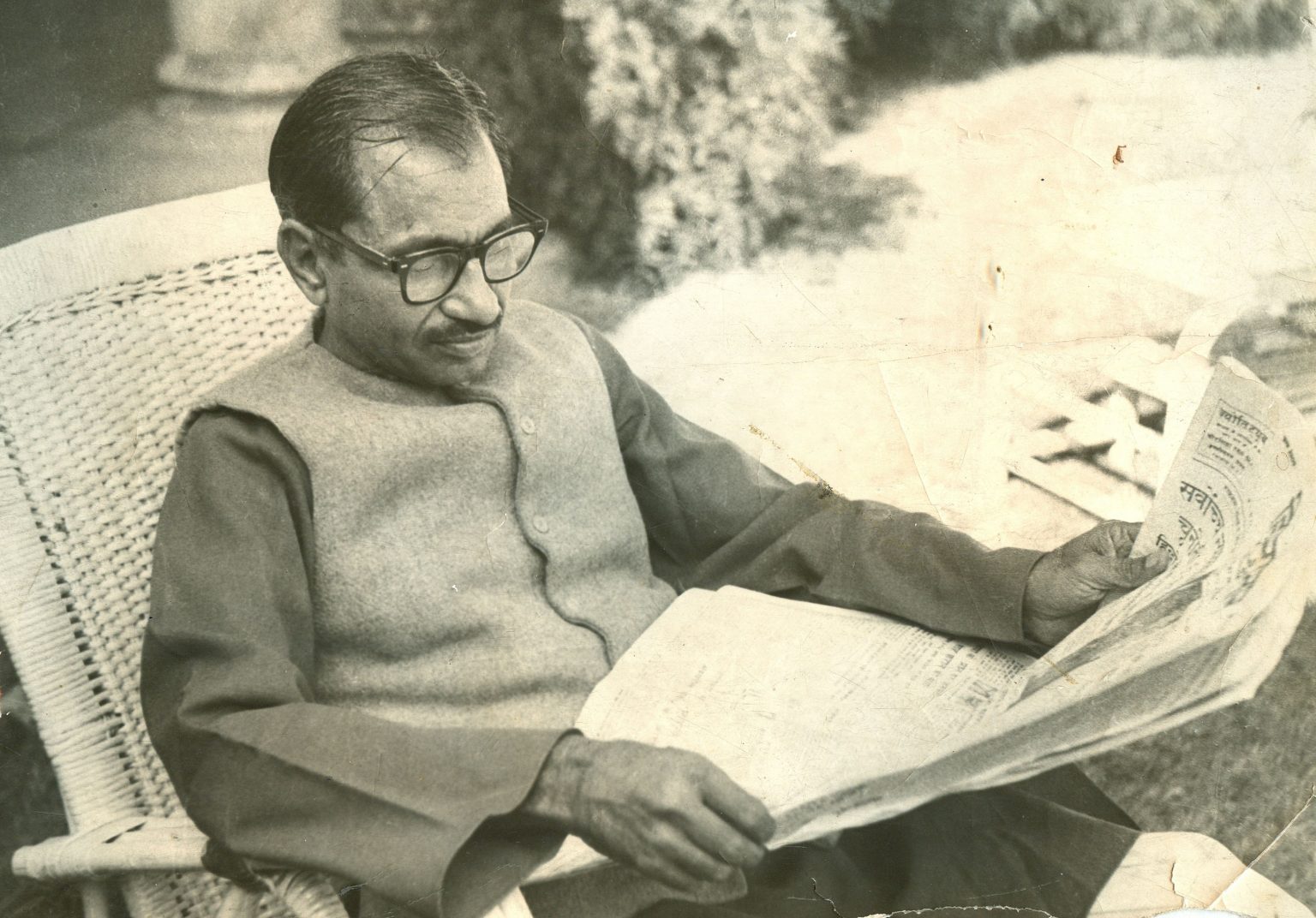COMMENTARIES ON DEENDAYAL UPADHYAYA – 3
- By : Anirban Ganguly
- Category : Articles

Real Representatives of People, the Road Ahead
Nehru was livid that the Jana Sangh was formed. He had reserved his choicest election rhetoric and abuse for the new party and its founder president Dr Syama Prasad Mookerjee. In one of those moments when he spewed venom at Dr Mookerjee’s efforts, Nehru publicly accused the Jana Sangh thus, “If there is any organisation in India which is really communal it is the Jan Sangh. It is a wholly reactionary organisation. All the reactionary people in India – I say this deliberately – princes and jagirdars, who are to my mind the real backward classes, are behind Jan Sangh. They are financing it.” Nehru had increasingly started sounding like a communist party apparatchik and hardly as a democratic minded Prime Minister of a country which had just given itself a new democratic and parliamentary constitution.
The Jana Sangh could obviously not stem the tide of the Nehruvian juggernaut in the first general elections. However for a party that had been formed a few months before the elections, it had gained a foothold, had made a mark and had stamped the narrative of a new political vision. “The Election Commission had set a level of three per cent of the total popular vote as the minimum to be polled by a party to qualify it as an “all-India party.” The Jana Sangh, had just inched before that mark, it had polled 3.06 per cent of the Lok Sabha votes. It was thus entitled to have its own election symbol which the Lamp – Deepak. (Baxter)
Three of its members were elected to the Lok Sabha; Dr Mookerjee himself won the Calcutta South-East seat, his stronghold. The Congress and the Communist Party of India (CPI) had tried to eat into his votes but had miserably failed. Durga Charan Banerji won from Midnapore, and in Rajasthan, Umashankar Trivedi, won the Chittor seat by a very narrow margin. Prime Minister Modi lyrically referred to this phase once, when he spoke of the journey from three to three hundred! For the rank and file of Jana Sangh, the performance was a dampener, but against the prevailing odds, it had done well. Perhaps only Dr Mookerjee and Deendayalji foresaw the struggle ahead while being confident of an ultimate triumph, whenever that would be.
Intrepid and undaunted that he was, Deendayalji, never failed to seek for the positive, never lagged behind in radiating optimism even in extremely adverse circumstances. His intrinsic faith in the ultimate triumph of the new political narrative and in the destiny of India drove him. As general secretary of Uttar Pradesh Jana Sangh, Deendayalji wrote a letter “The Road Ahead for Jana Sangh Workers” for workers of the state unit. It was, in effect, a letter that should have been read – perhaps it was – by Jana Sangh workers across the country. “It is essential”, he began, “that we do not let the contact we have made with the people of our areas in recent days and months to vanish like waves in water, but make every effort to strengthen them.” For Jana Sangh, the just concluded elections, Deendayalji, told them, “have revealed both our strengths and weaknesses, as also our positive and negative aspects. When we look at the prevailing situation, it is clear that the Bharatiya Jana Sangh has risen on the Indian political scene as a political phenomenon that cannot be ignored…” He was prescient, in every election after the first one, Jana Sangh, would see its vote and seats tally increase. For being the real representatives of the people, Deendayalji exhorted the workers they had to be with the people “in their difficulties” and not merely approach them for the sake of votes. The five point plan thus, for strengthening the Jana Sangh will be:
- Shakhas (units) of the Jana Sangh: opening of units in every village and grassroots expansion.
- Creation of an electoral machinery: a structure to disseminate knowledge and know of on how to contest elections.
- Creative programmes: education and orientation of workers on various national issues, to understand and internalise the discourse and then spread the narrative in different fields.
- Agitational Programmes: Organised redressal of grievances, workers and units of Jana Sangh must take up these grievances and bring these to the notice of concerned authorities, generate public opinion around these to coerce the government to act.
- Propagation: of ideas, programmes, and activities of the Jana Sangh.
These basic activities meant for every karyakarta of a party – more so for an ideologically based and organised party such as the Jana Sangh in the past and the BJP today – continues to remain relevant. Deendayalji’s approach to building a political superstructure was to start with the grassroots, with the small, with the doable, with ensuring that each constituent and component of the party could do what was being asked. His training as a quintessential pracharak had enabled him to master that technique, it was an edifice built brick by brick. Even in defeat, it had the capacity to renew and redirect itself. The party therefore continued to flow, to grow and stands and to this day having produced some of the most iconic leaders of our era. “More important than what has happened in the past is what we are going to do in the future…” Deendayalji signed off, true, he never looked back, never prevaricated.
Suggested Reading:
Congress versus Jana Sangh (CWDU:2)
The Road Ahead for Jana Sangh Workers (CWDU:2)
Craig Baxter, The Jana Sangh: a biography of an Indian Political Party
(The writer is the Director, Dr Syama Prasad Mookerjee Research Foundation)












